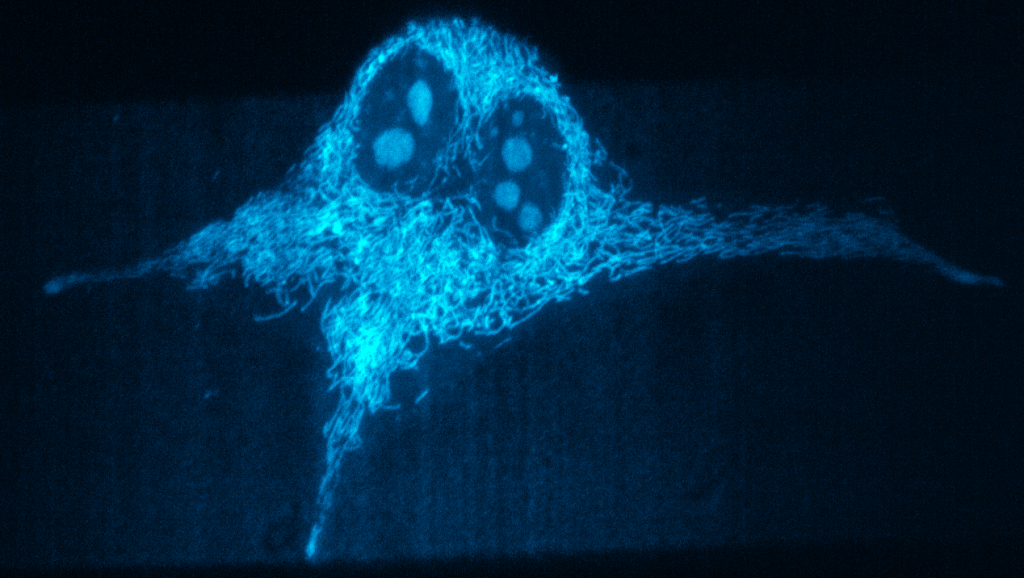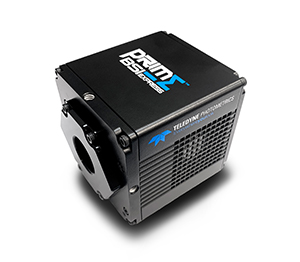Dr. James Manton
MRC Laboratory of Molecular Biology, University of Cambridge, UK
Background
Dr. James Manton develops new microscopy techniques in the MRC Laboratory of Molecular Biology, Cambridge. A recent development project involves an oblique plane microscope (OPM) with a Mr. Snouty solid-immersion objective, which combines the speed and efficient illumination of light-sheet with the ease of use of a traditional inverted microscope. Dr. Manton aims to do multicolor imaging at higher speeds than existing light-sheet systems allow while maintaining the standard sample presentation of an inverted microscope.
This light sheet imaging system has been designed for a wide variety of samples, including highly photosensitive Dictyostelium slime molds, T-cells, mouse fibroblasts, and other samples that require the gentle illumination of light-sheet.
Dr. Manton told us about their new light-sheet imaging system, “Because we are using a galvo mirror rather than moving the stage through the 3D acquisition, we can go five, ten times faster. This is particularly nice because a lot of the processes we want to look at, e.g., Dictyostelium are extremely fast. On our traditional light-sheet microscope we can acquire one volume a second, but here we are aiming for up to ten.”

Challenge
As the OPM will involve imaging volumes at high speed, a suitably high-speed camera is needed to capture all the light coming from the microscope in real-time. This kind of high-speed imaging requires low exposure times, combined with the low illumination level of light-sheet and the highly photosensitive samples, a highly sensitive camera is also needed to maximize the use of the photon budget.
In addition, this imaging system has a fixed magnification (55.7x), meaning a specific pixel size is required in order for optimal Nyquist sampling and high-resolution imaging.
Dr. Manton also mentioned some issues with previous sCMOS cameras, “we had issues with gain variation on previous sCMOS solutions — when we used an ROI to look at a single cell the non-uniformity in the gain became really clear at these low signal levels. This also made deconvolution trickier.”
A new sCMOS imaging solution would need to have both low noise levels and no patterns or artifacts on the sensor, in order to have high sensitivity and reliable post-processing.
The [Prime BSI Express] gives us better gain variation and raw image quality compared to other sCMOS-style cameras.
Solution
The Prime BSI Express is a flexible, reliable and powerful sCMOS camera, featuring high speed combined with high sensitivity.
Dr. Manton described his experience with the Prime BSI Express “We knew we wanted an sCMOS-style camera because of their speed, pixel size, and sensitivity… The gain variation appears to be a lot flatter on the Prime BSI Express compared to typical sCMOS, resulting in superior raw image quality.”
“We have two [Prime BSI Express] on separate light paths split by a dichroic mirror. The system is run with MicroManager and the Photometrics device adaptor works just as expected, with nice, flat images at low light levels.”
The Prime BSI Express has a clean, pattern-free bias and low noise CMS mode. Combining this with the near-perfect 95% quantum efficiency results in a highly sensitive camera that can run at 95 fps across the full sensor, allowing for high-speed imaging across large volumes.

